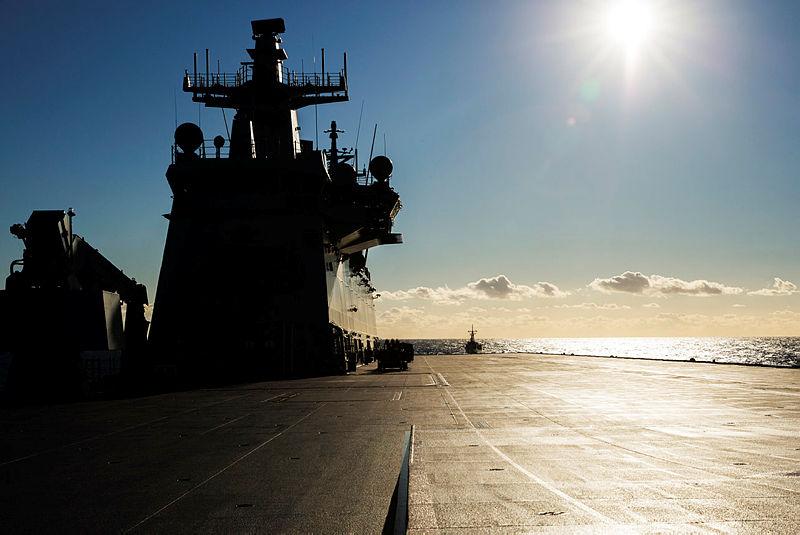Reader response: Australia’s amphibious fleet
Posted By Bob Moyse on June 7, 2017 @ 10:30

As a long-time amphibious capability advocate I welcome Andrew and Geoff’s piece [1] but I think that it’s useful to distinguish between amphibious tactical operations, amphibious logistic support to land operations, and sea lift which requires a port. Tactical amphibious operations usually employ relatively light forces that can quickly cross almost any coastline at will, but have limited staying power. Amphibious logistic support to conventional land operations emphasises lift rather than agility and tempo. Sea transport, in the traditional sense, is port-dependent and is rarely a navy capability.
HMAS Choules is an amphibious logistic ship. She carries more cargo than the LHD, her Mexeflote-powered pontoons carry four times the weight the LHD’s landing craft can handle, and they’re better suited for heavy or awkward individual loads. She also has a container park and two useful 30-ton cranes. As long as there are no tactical considerations to worry about, she’s better than the LHD at delivering the heavy equipment and engineering plant needed for the type of disasters Andrew and Geoff discuss.
The LHD is different. If you want to launch an over-the horizon night time helicopter assault and follow it up with a high-speed, but relatively light, surface assault, then it beats the LSD hands down. Just don’t expect its helicopters or high-speed tactical landing craft to shift the type of heavy equipment the LSD’s Mexeflotes will. Incidentally “assault” doesn’t mean landing under fire. It just means that the enemy is likely to react before you complete the job, so you have to land tactically.
The high-speed vessels described in the article are neither of these types. They are sea-lift ships that need ports and ports are often unavailable. Secondly, their design parameters are narrow. They’re designed to carry specific loads at specific speeds over specific distances. Changing one of those variables dramatically impacts the other two, rendering them of little use for routes other than the one for which they were designed. That’s great if you know exactly what you want them to do, like shuttling from Darwin to Dili, but military responses just aren’t that predictable. No one who uses this type of vessel does so for amphibious operations.
The 2016 Defence White Paper provides for another support ship, which may be either an Auxiliary Oiler Replenishment (to support the surface fleet), an amphibious logistic ship, or a hybrid. The answer depends on the strategic priority between agile amphibious operations, heavy logistics across a beach and endurance of surface forces at sea. Whatever the priority, the solution is unlikely to look like a high-speed vessel.
Andrew Davies and Geoff Slocombe reply:
A big thanks to Bob Moyse for his response to our post on Navy’s amphibious and sealift capability. He’s quite right to make the point about the difference between amphibious lift, amphibious logistic support, and sealift that requires a port. We should have been clearer on that. And we don’t disagree about the limitations of high-speed vessels either—he makes valid points about the trade-offs that operating such ships would require. But we aren’t suggesting for a moment that Navy have those sorts of vessels instead of its dedicated amphibious vessels. It so happens that Australia’s local region has many places that lie within the reach of high-speed transports and in which future ADF peacekeeping and stabilisation operations are likely. In those circumstances, port facilities will be available, and the benefits of speed (and thus mission turnaround time) could be realised—exactly as happened in 1999 in East Timor.
Article printed from The Strategist: https://aspistrategist.ru
URL to article: /reader-response-australias-amphibious-fleet/
URLs in this post:
[1] welcome Andrew and Geoff’s piece: /navys-amphibious-fleet-room-one-two/
Click here to print.